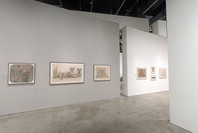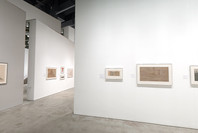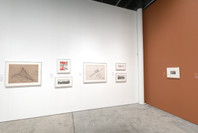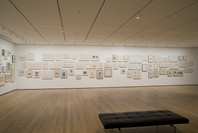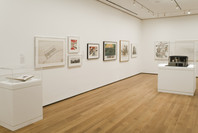Cedric Price came on to the British architectural scene in the late 1950s, a time in which housing complexes, schools, industrial parks and new towns were springing up all over Britain. There was an overriding belief in a socially responsibly architecture and general feeling of optimism about the future and architecture's capacity to improve the environment. Price, however, was determined that his work would not impose physical or psychological constraints upon its occupants nor reduce them to standards, as did modernist architecture. Through the pairing of humor and playfulness with complete conviction, Price's projects all attest to his belief in an architecture that provides inhabitants as well as viewers individual freedoms. Technology, based on the paradigm of a flexible network rather than a static structure, played an essential role in Price's work.
Publication excerpt from an essay by Bevin Cline and Tina di Carlo, in Terence Riley, ed., The Changing of the Avant-Garde: Visionary Architectural Drawings from the Howard Gilman Collection, New York: The Museum of Modern Art, 2002, p. 56.
Potteries Thinkbelt was Cedric Price's critique of the traditional university system. Situated in a decaying industrial landscape, rather than in the usual urban or rural site, the Thinkbelt occupied one hundred square meters of the once-vital Staffordshire Potteries. It was designed to be an infinitely extendable network, as opposed to a centralized campus, and to create a widespread community of learning while also promoting economic growth. The framework for the network was a hundred-year-old railway system no longer in use. Not only would it transport people between housing and learning areas, but the cars themselves would become mobile teaching units. Complete with inflatable lecture theaters, foldout desks, and information carrels, the units could be combined and transferred to various sites as needed.
Publication excerpt from an essay by Bevin Cline and Tina di Carlo, in Terence Riley, ed., The Changing of the Avant-Garde: Visionary Architectural Drawings from the Howard Gilman Collection, New York: The Museum of Modern Art, 2002, p. 58.
![Cedric Price. Potteries Thinkbelt Project, Staffordshire, England (Perspective of Mobile Teaching Machines [cover design for the October, 1966 issue of the journal Architectural Design]). 1964–1966](/media/W1siZiIsIjUzMDE1MCJdLFsicCIsImNvbnZlcnQiLCItcXVhbGl0eSA5MCAtcmVzaXplIDIwMDB4MTQ0MFx1MDAzZSJdXQ.jpg?sha=979783e7b8746c2b)
